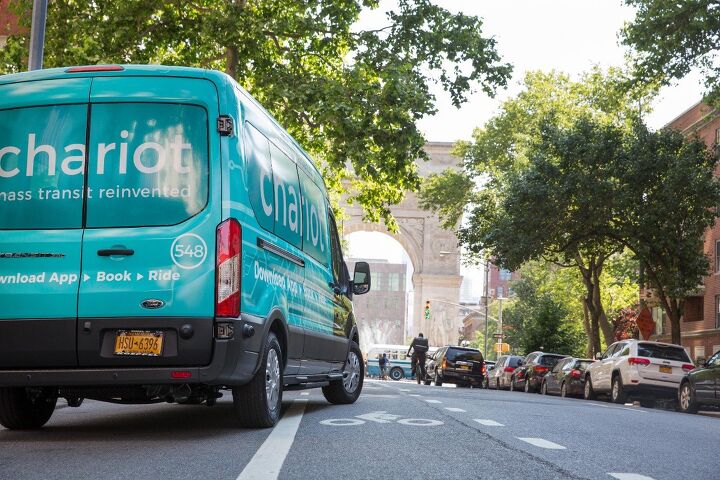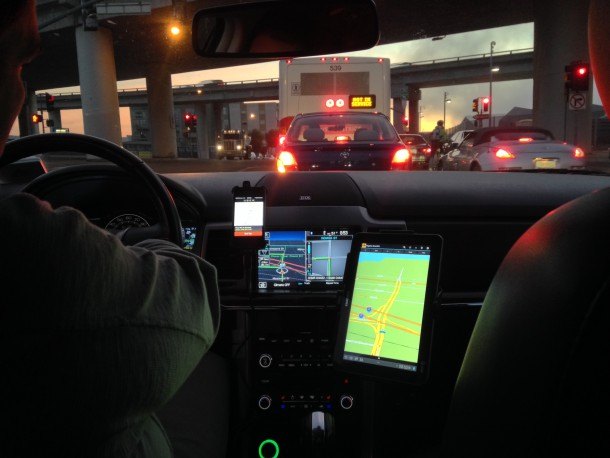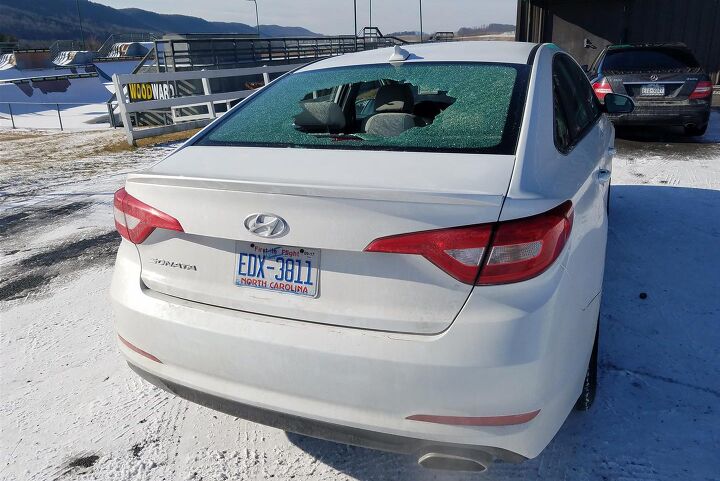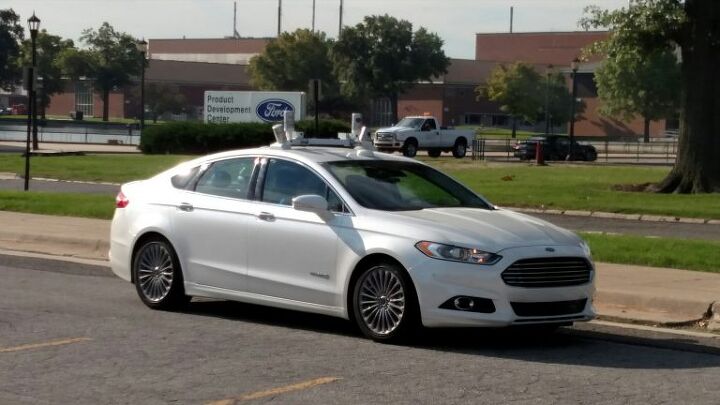#Ride-hailing
Lyft IPO Makes a Splash, Followed By a Flop
Despite playing host to what everyone presumed would be a very hot property, Lyft’s IPO hasn’t panned out as expected. While the company’s Friday stock debut was strong, April 1st was less promising, with Lyft’s share price slipping by nearly 12 percent in a single day. It’s now well beneath the target price, casting doubts about the financial sustainability of mobility firms.
It’s a complicated issue. Lyft was valued at more than $22 billion when it went public last week, but investors are concerned with the company’s inability to turn a profit. Last year, the ride-hailing giant posted a net loss of nearly $1 billion. With Uber likely to announce its own IPO soon (and likely face similar headwinds), many are concerned.
Booze Tops Motivation List in Firsthand Ride-hailing Study
Annoyed by the lack of passenger data available from ride-hailing companies like Uber and Lyft, two researchers took matters into their own hands. Hoping to learn why people use ride-hailing apps to get around town, the authors of a study published in the Journal of Transport and Land Use joined forces, with one of the men volunteering to get behind the wheel of a 2015 Honda Civic on the mean streets of Denver, Colorado.
If Uber and Lyft wouldn’t share, maybe real, live passengers would.
Ford's Chariot Program Didn't Last Very Long
Chariot, Ford’s app-based shuttle service, has announced it will throw in the towel due to the rapidly changing “mobility landscape” of major cities. When the company launched in 2014 with Jim Hackett at the helm, it joined a bundle of “microtransit” firms hoping to undercut brands like Uber while providing a viable alternative to public transportation.
Ford acquired the company in March of 2016 for a reported $65 million, proving that not every mobility firm can be a golden goose. It snagged Hackett and made him Ford CEO roughly a year later, where he continued to oversee Chariot as chairman of the automaker’s Smart Mobility subsidiary. Unfortunately, the service is no longer deemed sustainable.
On the upside of things, this ought to put a few coins in the jar labeled “Restructuring Program” at Ford’s Dearborn headquarters.
Uber's Quarterly Losses Reach $1.1 Billion in Third Quarter
Uber’s in a bit of trouble after quarterly losses surged to $1.1 billion dollars. The ride-hailing giant has watched its sales growth dwindle this year, despite an expensive attempt to promote its global expansion.
It’s not the kind of thing you want to see from a company at the forefront of “revolutionizing” the automotive sector, especially since so many automakers seem keen on copying aspects of its business model.
Pilotless Pacifica Rides for Paying Customers Are Just a Month Away: Report
Waymo expects to quietly rolls out a commercial, autonomous ride-hailing service early next month, a new report claims, making it the first such service to open itself up to paying customers.
The company, a subsidiary of Google parent Alphabet, has tested a fleet of driverless Chrysler Pacifica Hybrids in Arizona for some time, recently bringing a group of non-paying riders on board for free test trips in the Phoenix area. Now, it’s time for the real show to start, albeit slowly.
One Way of Finding Customers: Pay People to Use Your Service
Ride-hailing company Lyft wants you to ditch your car — and hopefully give it up altogether. After rolling out a limited pilot project in Chicago last month, the company has launched a new initiative in 35 American and Canadian cities that compels drivers to leave their car untouched for 30 days.
Lyft hopes to find 2,000 people willing to take part in its “Ditch Your Car” challenge. In exchange, the company will provide credits for a slew of services under its corporate umbrella (ride hailing, bike sharing, but not scooter sharing… yet), as well as credits for transit. What’s stopping these drivers from secretly using their personal vehicles during the month-long experiment? Nothing.
Toyota Investing $500 Million Into Uber for Driverless Partnership
Toyota Motor Corp. is set to drop about $500 million into Uber Technologies Inc. under an agreement that will see both companies work jointly on self-driving vehicles. The ultimate goal is for Toyota to bring to market its own autonomous vehicles using some of Uber’s hardware, with direct access to its ride-sharing network.
According to the automaker, the initial push will use the Sienna minivan as a platform for the “Autono-MaaS” (autonomous-mobility as a service) fleet. This makes the arrangement sound very similar to Waymo’s deal with FCA, which allows Alphabet’s autonomous arm to use the Chrysler Pacifica as a test platform for its self-driving hardware in exchange to having improved access to autonomous technology. However, Toyota said the partnership’s primary goal is improving safety and lowering transportation costs for the public.
Feeling Average? Study Shows Owning a Car Is Still the Cheapest Way to Get to Your Destination In a Car
Say you’re an urbanite who made the decision to leave the perils and unexpected expenses of car ownership begin and rely only on your phone. A money-saving choice? Not necessarily, according to a study the American Automobile Association.
Drawing information from numerous studies, AAA’s report looks at the cost of owning a vehicle versus the cost of replacing those same trips with a ride-hailing app and infrequent car rental. It’s not even close, but, as the saying goes, your mileage may vary.
Same Old Song: Study Claims Uber and Lyft Increasing Congestion Problem in Seattle
A new study from Schaller Consulting is claiming that ride-hailing services, like Uber and Lyft, contributed to 94 million additional miles being driven on Seattle-area roads in 2017. We’ve heard similar claims in the past. Data-backed allegations typically revolve around the notion that app-based services don’t encourage motorists to carpool so much as they pull pedestrians away from public transportation.
Considering how difficult most subway systems and bus lines are to enjoy, that’s not hard to believe.
From Contractor to Employee: California Ruling Poised to 'Decimate' Uber, Lyft
An April ruling from the California Supreme Court determined that most contract workers, including those partnered with ride-hailing companies like Uber and Lyft, could actually qualify as employees under the state’s wage laws.
While that’s great in an era when wages can’t seem to match the constantly ascending cost of living and companies are cutting corners to maximize profits, it’s not so great for outfits that depend on contract workers to exist — like the aforementioned ride-hailing firms.
Uber and Lyft managed to balloon their revenues far beyond the billion-dollar mark, but neither company is currently profitable. Despite taking a cut of every single fare, expenses still result in a net loss for the companies during most rides. Assuming California forces them to tack on employee benefits and all the associated trimmings, both businesses could be in for a world of hurt.
Rental Companies Should Be Worried About What's Gaining in Their Rear-view
For a product or service to dominate a body of customers, another must fade to the background. Think of direct and alternating current, or perhaps digital cameras and 35mm film.
It gets a little fuzzier when the topic of personal transportation arises. Some modes of transport are so much more more useful than what they replaced (cars and horses, jetliners and ocean liners) that the preceding mode is relegated to a niche category. In others comparisons, the usefulness of a certain mode remains strong only in certain areas. Think trains.
But in a car-based world, consumers now have more options than ever in how they get around when their personal vehicle is left sitting at home. A recent survey shows just how pleasant regular car renters find app-based ride-hailing services, and traditional rental companies would be foolish to not take note.
A Safer Route Home, but Is the Customer Always Right?
Depending on who you ask, Uber is either a godsend or a harbinger of civilization’s downfall. When the ride-hailing app went live in my corner of the world, disgruntled taxi drivers threatened violence against Uber drivers found waiting for a fare. I still get in the front seat out of habit. Cab drivers in other cities weren’t happy about their monopoly being threatened, either.
Elsewhere, Uber is a common way for urbanites to get around and, despite a number of past controversies involving the company and its drivers, people seem just fine with its presence. Naturally, for some users, safety remains an issue. But what if you could choose not only the route taken, but also the make and model of the vehicle showing up at your door? If the thought of riding in an old beater turns you off, why not wait until the closest vehicle with a five-star safety rating shows up? A new patent filing shows Uber wants to make that happen.
Grabbing the Future: Toyota Drops a Billion Into Ride-hailing Company
Not wanting to be left out of the alternative revenue streams party, Toyota Motor Corporation has invested $1 billion into a Singapore-based ride-hailing and ride sharing company you’ve probably never heard of.
Grab Holdings Inc., known to consumers simply as Grab, offers numerous car-based transportation options and services in Southeast Asia. Don’t have a car? Borrow one from Grab. Hail one operated by Grab.
In the future, it seems likely that car will be a Toyota.
For All Its Talk of Mobility, Ford Says It's Fine With FCA and GM Leading the Robocar Pack
If recent statements from Ford Motor Company were any indication, you’d think we were living in some futuristic society where our grandparents drove Nucleons and the need for a personal vehicle was almost nil. Yes, too much “mobility” talk gets under the skin.
That said, it’s Ford’s domestic rivals who are actually building and fielding production vehicles that drive themselves — and setting up businesses and partnerships that could make the automakers a bundle on the side. By next year, both General Motors and Fiat Chrysler could have self-driving vehicles roaming America, earning their companies money.
Be our guest, Ford claims. There’s bigger things to worry about.
Self-driving Company Waymo to Buy Thousands of High-end, Sporty Jaguar EVs for Taxi Service
Let’s hope future robo-taxi passengers appreciate a sport-tuned suspension and crisp driving dynamics, because there’s a slim chance they’ll notice it when shuttling around in a driverless Jaguar.
On Tuesday, Waymo, autonomous car unit of Google, announced its intent to purchase up to 20,000 Jaguar I-Pace electric crossovers for its future fleet of AV EVs. Fitted with an array of self-driving hardware and software, Waymo says the cars will hit the road in 2020. Testing begins this year, which has us wondering what kind of wait a regular I-Pace customer faces.




























Recent Comments